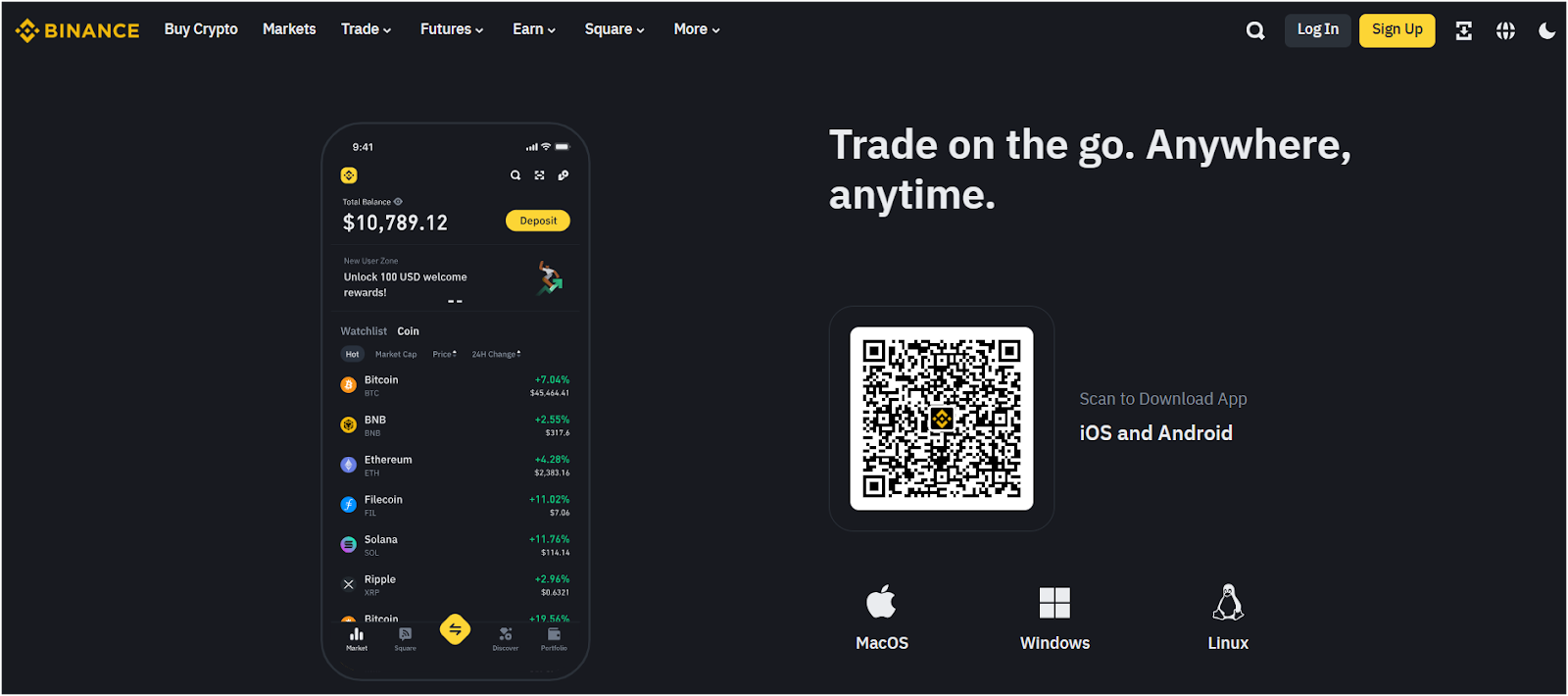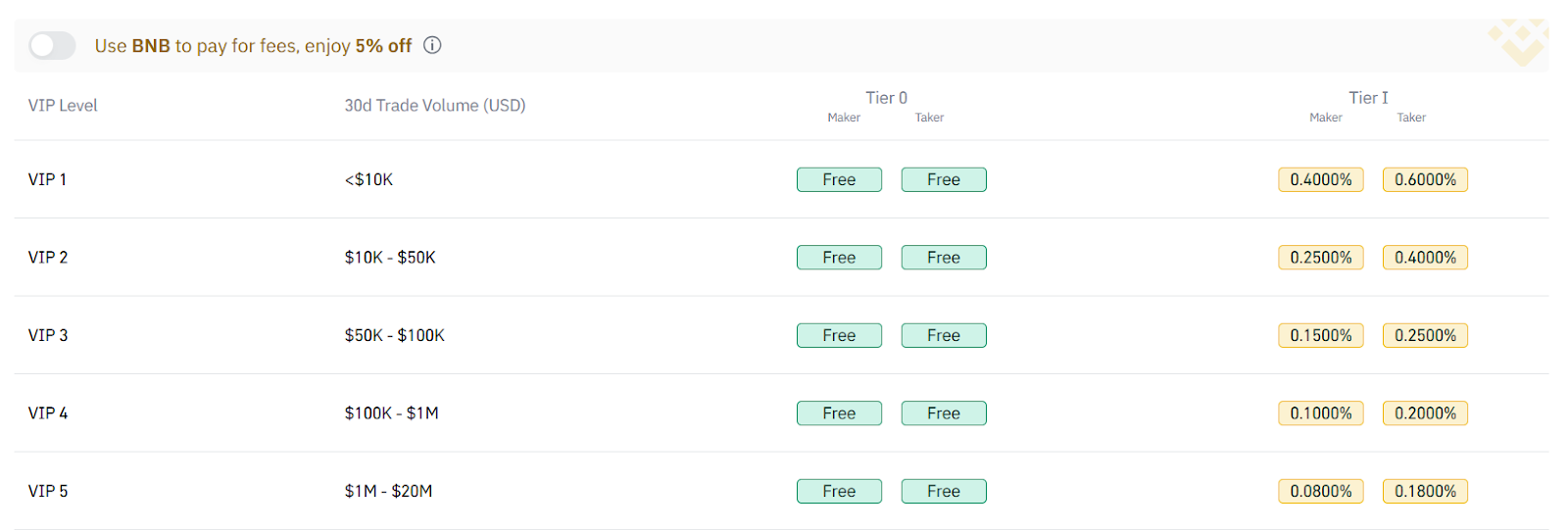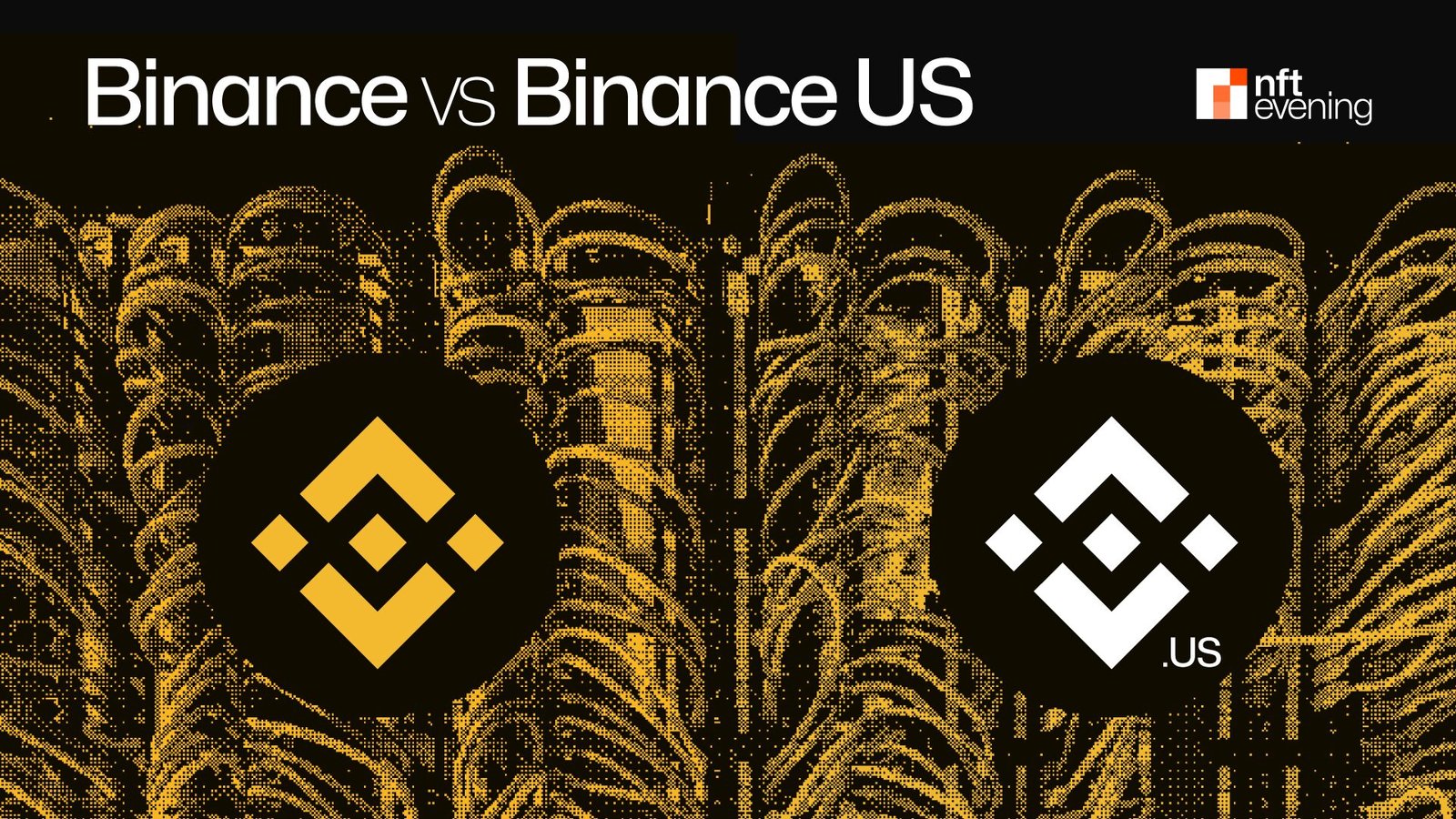How to participate in Hyperlane presale on Binance Wallet
What is Hyperlane: The Best Guide to Cross-Chain Connectivity
Is Binance Safe? Binance Exchange Security Measures Tested
What is XRP (Ripple)? The Complete Beginner’s Guide
What is Restaking in Crypto? The Beginner’s Guide
What Is Initia? A Comprehensive Guide to INIT Token
Binance Wallet Hosts Lorenzo Protocol (BANK) on PancakeSwap
Become Eligible on Monad with Fantasy.top
Towns Airdrop Guide: SocialFi Project Backed by a16z
Is MetaMask Safe and Legit? Security Measures Analysis
6 Best Crypto Exchanges in Singapore For 2025
Phemex Review 2025: Is it a Safe & Legit Crypto Exchange?
Binance vs Binance US: What are the Key Differences?
What Is GameFi and How Does It Work?
What is Ondo Finance? Future of RWAs and DeFi
What is Gem Wallet: Best Multi-Chain Solution for DeFi Users
What are Utility NFTs? Best NFT Utility Examples
Rabby vs MetaMask: Which is a Better Crypto Wallet?
What Is DeSci? The Ultimate Guide to Decentralized Science
What Are Pudgy Penguins (PENGU)? The Ultimate Collector’s Guide
What is an NFT Drop? Your Simple Guide to Participation
What Is Trust Wallet? A 2025 Comprehensive Guide
What is DeFi (Decentralized finance) and How Does it Work?
What is DeFi NFT? The Ultimate Guide
Is May the beginning of a new growth cycle for Bitcoin?
Top 5 projects Could be Listed on Binance
Mantra (OM) Price Prediction: Last Chance for Profit Gainers?
How Market Makers Become Executioners: A Lesson from the Mantra Collapse
Hyperliquid Deep Dive: Understand HYPE and HLP Model
XRP Deep Dive: A Masssive Player in Today’s Crypto Market
Study: 88% of Businesses Reported Higher Revenue after Accepting Crypto Payment
Survey: Nearly 80% of FTX Creditors Will Reinvest in Crypto with Their Repayment
XDC Deep Dive
Survey: 1 in 7 Americans Has Bought TRUMP Memecoin
Robonomics (XRT) Deep Dive
2025 Crypto Ownership Report: 70% of American Adults Own Cryptocurrency
By Fatima Rodriguez
Key Takeaways
Binance is best for global users, with 22 licenses across 180+ countries, whereas Binance.US is best for U.S. crypto traders due to state-specific compliance and registration under FinCEN.
Binance supports over 350 coins and multiple advanced features such as futures, margin, and options, whereas Binance.US supports only 160+ coins and does not offer advanced trading features.
Binance charges lower fees of 0.1% maker/taker with a 25% discount for BNB holders, whereas Binance.US has higher fees of 0.4% maker and 0.6% taker with only a 5% discount for BNB holders.
Crypto exchanges play a major role in today’s market, and Binance and Binance.US are the two best platforms worth exploring. Binance is a leading global exchange best for its wide range of features and services available across the world. Binance.US is its U.S.-based version, designed to follow American regulations and offer a much simpler experience.
In this guide, we will compare Binance vs Binance US based on fees, trading features, products, and eligibility to help you select the best platform for your needs.
User Score
10
Promotion
-10% Trading Fees
Get 10% Lifetime Cashback on Every Trade
Binance is a global company that operates the largest cryptocurrency exchange by daily trading volume. It was founded in 2017 by Changpeng Zhao. The exchange started in China but moved to Japan due to China’s cryptocurrency restrictions. It later relocated to Malta and now has no official headquarters.
The platform supports over 350 cryptocurrencies and its own token, Binance Coin (BNB). Binance offers various services beyond trading. It provides spot trading with fees as low as 0.1%, reducible to 0.075% using BNB. The exchange also supports futures trading with up to 125x leverage, staking via Binance Earn, and a Visa card for spending crypto. Binance Pay allows instant global payments with zero fees.
Binance is known for its security measures. It uses two-factor authentication, cold storage for most assets, and the Secure Asset Fund for Users (SAFU) to protect users. Binance faces regulatory challenges. The U.S. SEC sued it in 2023 for unregistered operations, and it pleaded guilty to money laundering charges, paying $4.3 billion in penalties. Changpeng Zhao stepped down as CEO and was replaced by Richard Teng. Read our in-depth Binance review here.
Binance.US is a separate platform and the best cryptocurrency exchange for users in the United States. It was launched in September 2019 as a separate entity from Binance to comply with U.S. regulations.
The platform is operated by BAM Trading Services, based in San Francisco, California, and partnered with Binance for technology and branding. Binance.US serves customers in 34 states, excluding Washington, New York, Texas, and Vermont.
The exchange offers trading for over 160 cryptocurrencies. Binance.US charges a 0.4% maker and 0.6% taker spot trading fee for regular users. It also offers free Bitcoin trading. The platform supports staking, allowing users to earn rewards on assets like Cardano (ADA) and Solana (SOL), with annual yields up to 12%.
Binance provides a comprehensive trading ecosystem for all levels. It supports spot trading with over 350 cryptocurrencies and 1,400+ pairs, featuring limit, market, stop-limit, and OCO (one-cancels-the-other) orders.
You can trade perpetual futures contracts with up to 125x leverage and use margin trading with borrowed funds at 0.01% daily interest. Options trading offers European-style contracts for BTC and ETH, while advanced charting via TradingView includes moving averages and real-time data. Binance also provides P2P trading for direct user-to-user trades and an OTC desk for large orders.
Binance.US focuses on simplicity and compliance for U.S. users. It offers spot trading with basic buy/sell features. Advanced charting mirrors Binance’s TradingView integration, but futures, margin, and options trading are absent due to U.S. regulations.
Winner: Binance, for its extensive, advanced trading features like futures trading, margin trading, and options trading.
Binance offers some of the lowest trading fees in the industry. It charges a standard 0.1% maker and taker fee for spot trading for users with a 30-day trading volume under $1M.
You can reduce this by 25% (to 0.075%) by paying with Binance Coin (BNB). Higher-volume traders unlock VIP tiers – e.g., VIP 1 (over $1M volume) drops fees to 0.09% maker and 0.1% taker, down to 0.011% maker and 0.023% taker at VIP 9 ($4B+ volume). 
Binance futures trading fees start at 0.02% maker and 0.05% taker, also tiered by volume. This structure benefits active global traders with flexibility and discounts.
Binance.US fees are higher and less forgiving. For 30-day volumes under $10,000 (VIP 1), Tier 1 pairs charge 0.4% maker and 0.6% taker – four to six times Binance’s base rate.
Tier 0 pairs (BTC/USD, BTC/USDT, BTC/USDC, BTC/BUSD) are free, but most trades fall under Tier 1. Above $10,000, fees drop – e.g., VIP 2 ($10,000-$50,000) is 0.25% maker and 0.4% taker, down to 0.08% maker and 0.18% taker at VIP 5 ($1M-$20M).
A 5% BNB discount applies, which is far less generous than Binance’s 25%. No futures trading exists due to U.S. rules.
Winner: Binance’s fees are consistently lower and more scalable, while Binance.US’s high Tier 1 rates overshadow its zero-fee BTC pairs. Binance wins for cost efficiency.
Binance offers free crypto deposits for all 350+ assets. Withdrawal fees vary based on network congestion. Fiat deposits (e.g., USD via bank transfer) are often free via partners, but card purchases hit 3.75%. Fiat withdrawals like USD vary by region. You benefit from low crypto fees and P2P trading with zero costs in some cases.
Binance.US also provides free crypto deposits. Withdrawal fees are sometimes high compared to global Binance users. Also, Binance.US does not charge fees for USD deposits or withdrawals using bank transfers (ACH).
Binance offers access to over 350 cryptocurrencies for trading. It includes popular coins like Bitcoin, Ethereum, and Binance Coin (BNB), as well as lesser-known altcoins such as Solana, Algorand, and Matic. You can trade hundreds of pairs. Binance constantly updates its listings and often adds coins through its Launchpad program.
Binance.US provides a much smaller selection, with about 160 cryptocurrencies available. It includes major coins like Bitcoin, Ethereum, and Litecoin but lacks the extensive range of altcoins found on Binance. The platform focuses on popular, established tokens to comply with strict U.S. rules. You won’t find as many niche or new cryptocurrencies here because it prioritizes regulatory safety over variety.
Winner: Binance, because it offers more than double the cryptocurrency options (350 vs. 160).
User Score
10
Promotion
-10% Trading Fees
Get 10% Lifetime Cashback on Every Trade
Binance is an international platform that operates globally but faces some regulatory challenges. The exchange is banned in the U.S., Iran, North Korea, and Thailand due to strict laws. You can’t use Binance in the U.S. because it doesn’t meet federal requirements. It holds 22 licenses in places like Bahrain, Dubai, India, and France, but it’s under scrutiny from regulators like the U.S. Department of Justice for past issues like money laundering allegations in 2023.
Binance.US is designed specifically for the U.S. market. The platform is available in 34 states but not in Hawaii, New York, Texas, or Vermont due to state-specific rules. You can trade legally here if you’re in an allowed state, and it’s registered with the U.S. Financial Crimes Enforcement Network (FinCEN). It avoids the global bans Binance faces by tailoring its operations to U.S. laws. About availability, Binance is available in 180+ countries, but Binance.US is specifically designed for U.S. users only.
Winner: Binance is regulated in over 22 countries, whereas Binance.US is built for and registered in the United States only.
The major security measures of the Binance global cryptocurrency exchange platform are:
Binance has experienced a notable security breach in the past. The most significant incident occurred in 2019 when hackers stole 7,000 Bitcoin (BTC), worth about $40 million at the time, from the exchange’s hot wallet.
Another major event tied to Binance happened in 2022 when a cross-chain bridge on the Binance Smart Chain (now BNB Chain) was hacked. Hackers exploited a flaw, minting 2 million BNB tokens valued at $570 million. Binance paused the chain and, with community help, froze $7 million of the stolen funds.
Binance.US matches many of these features for U.S. users. It also uses 2FA and cold storage for 95% of assets and has its own insurance fund. The exchange emphasizes U.S.-based storage facilities for added trust.
You won’t find a history of major breaches here, unlike its parent company. It ranks high on security reviews, like CER’s list, even above Coinbase. The platform focuses on keeping your assets safe in a regulated environment.
Winner: Both exchanges are highly secure, but Binance.US has never faced a security breach.
Binance leads the world in trading volume, with $50 billion+ daily spot trading volume. It serves 250 million users across 180+ countries, making it the most liquid exchange globally. You can execute trades fast with minimal price slippage because of its massive user base and deep order books. The platform handles thousands of trading pairs, ensuring high liquidity even for obscure coins.
Binance.US trails far behind, with a trading volume of around $30 million per day. It caters to a smaller U.S. audience, and you might notice slower trades or wider spreads on less popular pairs due to lower liquidity. The exchange supports fewer assets, so it can’t match the depth of its global counterpart.
Winner: Binance, for its unmatched trading volume and liquidity.
Here are the top Binance Products & Services
Binance.US Products & Services
Winner: Binance has a comprehensive suite – spot, futures, margin, options, staking, savings, P2P, NFTs, loans, a card, Launchpad, and mining. Binance.US limits itself to spot trading, staking, swaps, and OTC.
Binance offers robust customer support for its global users. It provides 24/7 live chat, email support, and a detailed help center with guides. You can reach out in multiple languages, reflecting its 250 million users across 180+ countries. Response times are generally quick, often within hours, though peak times can slow things down. The platform has improved since early complaints, earning praise for responsiveness by 2025.
Binance.US provides similar options but with mixed results. It offers 24/7 live chat, email, and a support ticket system tailored to U.S. users. You might wait longer, sometimes for days, especially during verification delays. The exchange serves fewer people yet struggles with consistency. It lacks phone support, unlike some U.S. competitors like Kraken.
Winner: Binance, for faster and more reliable customer support compared to Binance.US.
The international Binance platform delivers a versatile user interface for all levels. It offers a basic mode for beginners and an advanced mode with charting tools, like TradingView integration, for pros. You can trade over 350 coins across spot, margin, and futures markets, all on a clean, customizable dashboard. The mobile app mirrors this flexibility. It’s intuitive yet packed with features.
Binance.US simplifies things for U.S. users. It provides a streamlined interface with basic and advanced views, supporting 160 coins on spot trading only. You get similar charting tools but fewer options like futures or margin trading due to regulations.
The platform is user-friendly, with a mobile app rated well for ease, though some find it less dynamic than Binance’s. It suits beginners but may bore advanced traders.
Winner: Binance has a more advanced user interface, whereas Binance.US has a more basic version without any advanced tools due to regulatory compliance.
User Score
10
Promotion
-10% Trading Fees
Get 10% Lifetime Cashback on Every Trade
To compare Binance vs. Binance.US, the differences are clear across key areas. Binance dominates globally with over 350 cryptocurrencies, a $50 billion daily trading volume, and access in 180+ countries, making it ideal for diverse, high-volume traders. Its user interface is robust, its customer support is efficient, and its security is strong despite a 2022 hack, backed by a $1 billion SAFU fund. However, it’s unavailable in the U.S. due to regulatory bans.
Binance USA version caters to Americans in 34 states, offering 160 cryptocurrencies, a $30 million trading volume, and strict U.S. compliance. It provides a simpler interface and a clean security record but lags in liquidity and support responsiveness.
The global Binance platform excels in scale and variety, while Binance.US prioritizes legality and safety for U.S. users. For global reach and features, Binance wins; for U.S.-based trading, Binance.US is the only option. Your choice depends on location and priorities. You can also check out our other comparisons, like Binance vs OKX and Binance vs Bybit.
Binance can be used by global users in over 180 countries, including Europe, Asia, and Africa, and offers trading futures, spot, margin, and options. Binance.US is only for U.S. traders in 34 states. The platform focuses on compliance and simplicity, limiting features like futures or margin trading for its American audience.
Yes, Binance.US is legal in the USA and designed to comply with U.S. regulations. It operates under BAM Trading Services, a U.S.-based entity registered with the Financial Crimes Enforcement Network (FinCEN). The platform adheres to federal laws, including anti-money laundering (AML) and KYC requirements, ensuring users verify their identity with government-issued IDs. You can use it in 34 states.
You should use the Binance.US app if you’re in the United States. It’s tailored for U.S. residents, available on iOS and Android, and supports trading 160 cryptocurrencies. The app complies with U.S. laws and requires KYC verification with a U.S. ID. You download it from the App Store or Google Play, log in with a Binance.US account, and trade legally in states like California or Florida, but not New York or Texas.
USD on Binance refers to the U.S. dollar, a fiat currency issued by the U.S. government. It’s used in limited trading pairs, like BTC/USD, where you trade cryptocurrencies directly against real dollars. You deposit USD via bank transfers, but availability is restricted due to regulatory hurdles. Binance rarely offers USD pairs globally, but Binance.US uses USD.
USDT, or Tether, is a stablecoin pegged 1:1 to the USD and issued by Tether Limited. It’s widely used on Binance, with over 350 trading pairs like BTC/USDT. You can trade it freely without bank involvement, as it’s a cryptocurrency stored in wallets. USDT maintains stability, with each token backed by dollar reserves, making it a popular proxy for USD on exchanges.
USD involves actual cash and stricter rules, while USDT mimics USD value within the crypto ecosystem. Binance favors USDT for its flexibility and volume.
No, Binance.US is not shutting down; it remains operational, serving millions of users across 34 U.S. states. The platform faced challenges, like a $4 billion fine tied to its parent company Binance’s legal issues, and paused USD withdrawals for some time due to SEC pressure. You can still trade crypto-to-crypto pairs, and it’s licensed by FinCEN, showing commitment to U.S. compliance.
Fatima Rodriguez
Fatima Rodriguez is a freelance writer that has been in financial journalism for over 5 years. With a keen interest in the evolving digital finance landscape, Fatima has a strong understanding of the crypto ecosystem and the crucial role that exchanges and wallets play in it. In her free time, Fatima enjoys meeting people, attending fintech webinars and conferences, and staying updated on the latest industry trends.
Disclaimer
NFTevening is an award-nominated media outlet that covers NFTs and the cryptocurrency industry. Opinions expressed on NFTevening are not investment advice. Before making any high-risk investments in cryptocurrency or digital assets, investors should conduct thorough research. Please be aware that any transfers and transactions are done at your own risk, and any losses incurred are entirely your responsibility. NFTevening does not endorse the purchase or sale of any cryptocurrencies or digital assets and is not an investment advisor. Additionally, please note that NFTevening participates in affiliate marketing.
Cryptocurrency
Analysis
Crypto Basics
Learn
Cryptocurrency
Exchanges
Data
News
Analysis
News
News
Airdrop
Please be aware that our Privacy Policy, Terms of Use, and Disclaimers & Ethics notice have been updated.
NFTevening is a renowned and award-nominated media platform dedicated to reporting on the cryptocurrency industry. Its journalists adhere to a rigorous set of editorial standards, guided by principles designed to uphold integrity, ensure editorial independence, and maintain unbiased reporting across all its publications.
The latest news, articles, and resources, sent to your inbox weekly.
Binance vs Binance US: What are the Key Differences? – NFT Evening





